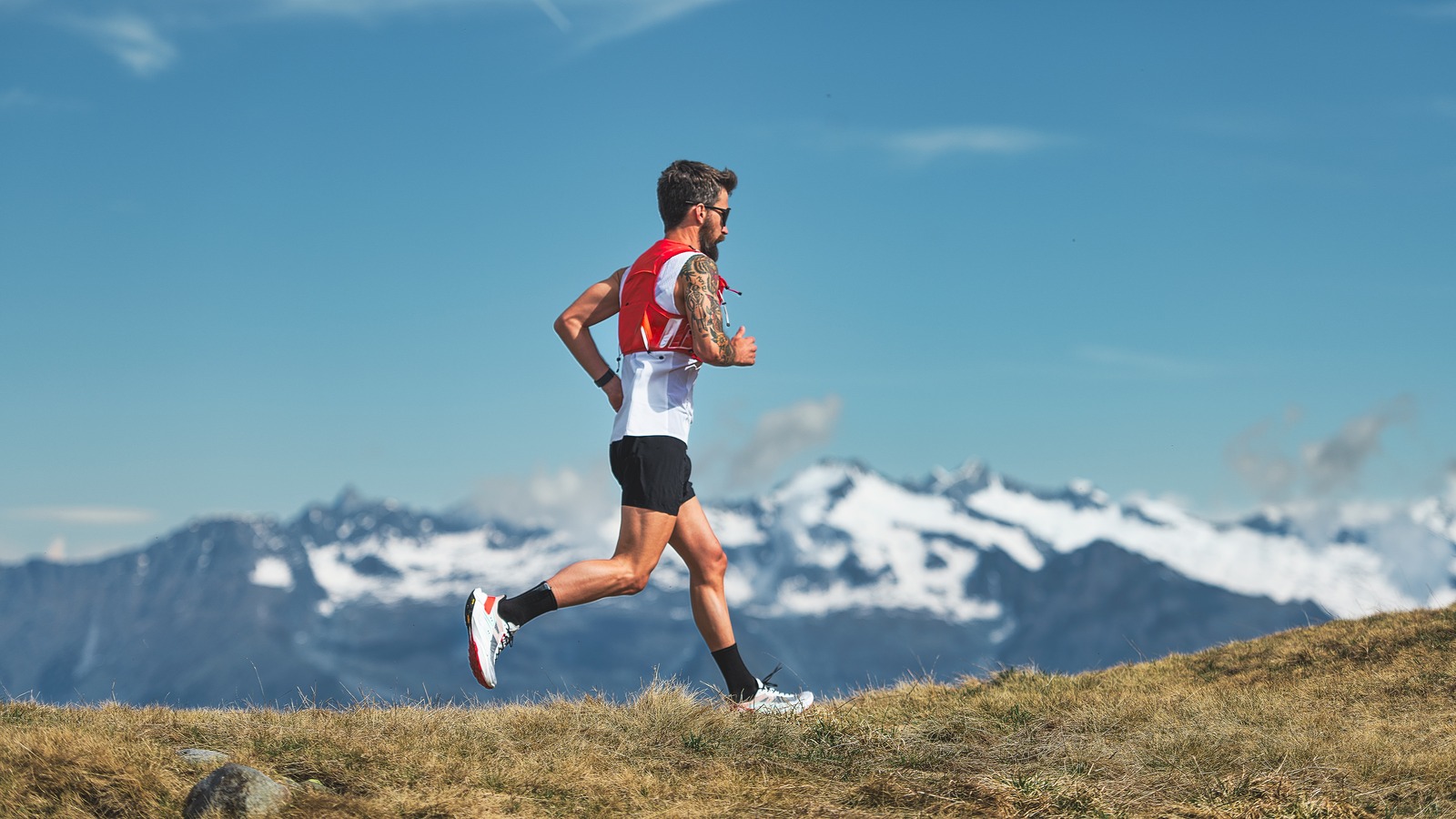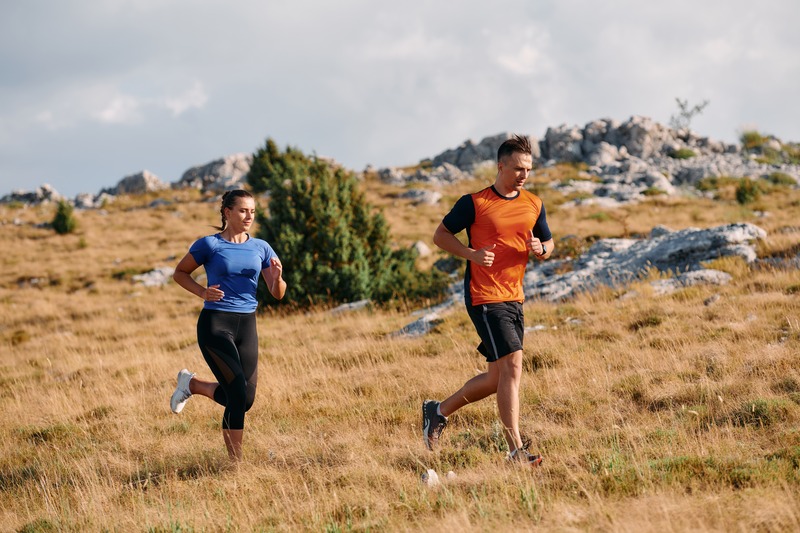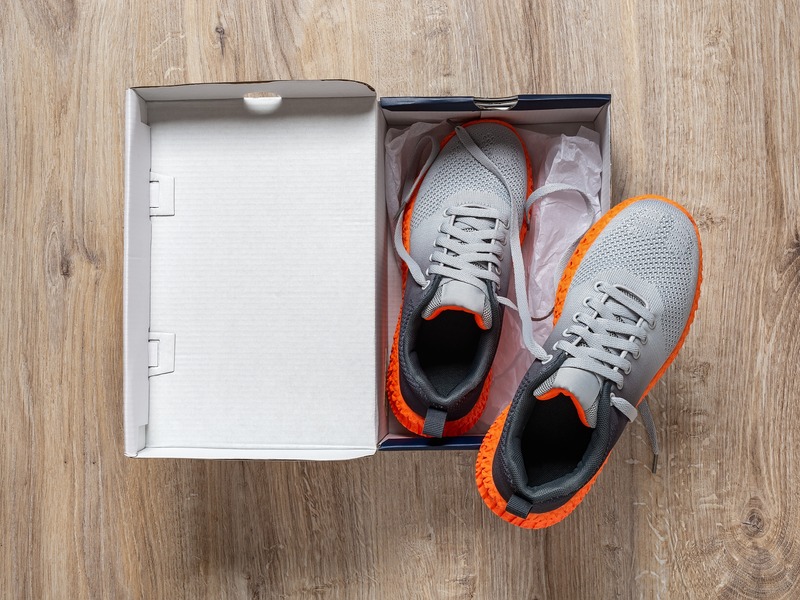Trail Running Shoes vs. Road Running Shoes: What's the Difference?
June 19, 2024

When you buy through links on our site, we may earn an affiliate commission.
As a runner, one of the most critical decisions you'll make is choosing the right pair of shoes for your preferred running surface. The wrong choice can lead to discomfort, reduced performance, and even injury.
But if you run on different terrains, like gravel, asphalt, and dirt roads, you might wonder whether a road running shoe or trail running shoe might be the best choice. While they share the same goals of providing support, stability, and comfort, they differ in key aspects such as outsole design, cushioning, upper materials, and overall durability.
So, let's explore the essential differences in more detail so that you can ensure you are equipped with the proper footwear for your running adventures.
Running Shoes vs. Trail Running Shoes: Key Features Comparison
As mentioned, the key differences between road running shoes and trail running shoes, broadly speaking, relate to differences in outsole design, cushioning, upper materials, and overall durability.
Outsole Differences
Perhaps the outsole is the most striking difference between trail running shoes and their road running counterparts. Trail shoes feature an aggressive tread pattern, with protruding lugs that can measure as high as 8mm. This more aggressive design ensures grip on slippery, uneven, and softer surfaces like sand, dirt, or mud.
By contrast, road running shoes offer a much smoother, flatter outsole to give a smoother ride across level surfaces such as asphalt or concrete.
Differences in Cushioning
If you were to try on a road running shoe and a trail running shoe and jog around the store, you would immediately notice a difference in the cushioning and overall feel of the two shoe types.
Trail running shoes tend to be much firmer underfoot and deliver increased support and stability. This helps on uneven, soft, or loose surfaces but can feel uncomfortable on roads. By comparison, road running shoes deliver a much softer, plusher cushioning experience and better absorb impact on hard surfaces.
Upper Materials Contrast
Again, there are fairly stark differences between these two shoe categories across their upper materials. As you might expect, trail shoes are far more rugged up top to deal with the expected roughness associated with running off-road. Materials used include ripstop nylon, reinforced mesh, or even GORE-TEX to deliver 100% waterproofing.
Road running shoes are usually much more focused on breathability and ventilation. Standard mesh is popular but is prone to ripping. Knitted uppers offer a superior fit in a trade-off for a little less breathability. There is also a range of synthetic uppers and hybrid mesh and leather options that give a tighter midfoot fit.
Durability Differences
While it's difficult to compare durability across specific models, broadly speaking, trail shoes feature a more durable construction. This is derived from the fact that they are designed to take on much more rugged terrain and often feature more rigid outsoles and firmer foams in the midsole.
Road running shoes, by contrast, are focused on being lightweight and responsive. Their foams are designed to withstand lots of repetitive impact on hard, even surfaces but eventually wear down and lose their springiness. This tends to happen after around 300 to 500 miles of use.
Why Terrain Should Shape Your Running Shoe Choice
The terrain you choose to run on should determine the type of running shoe you need. Trail surfaces, such as rocks, roots, and mud, present unique challenges that require specific shoe features to keep you safe and comfortable.
When navigating trails, you'll want a shoe with an aggressive outsole pattern that provides superior traction and grip on uneven surfaces. A firmer midsole will offer the stability to tackle obstacles and prevent ankle rolls. Those reinforced uppers we've mentioned will also protect your feet from sharp debris and low-lying branches while providing durability against the elements.
Conversely, concrete and asphalt are hard, uniform surfaces that require shoes with ample cushioning to absorb impact and reduce the strain on your joints. Given the even surface, there's less need for outsole grip, and the focus is on delivering a footstrike that aids your running form and keeps you injury-free.
Choosing the wrong shoe type for your running terrain can lead to a whole host of problems. Using road shoes on trails can result in slips, falls, and potential injuries due to insufficient traction and support. Conversely, wearing trail shoes on roads can cause discomfort and premature shoe wear, as the aggressive outsole and firmer cushioning are not designed for hard surfaces.
Road Running and Trail Running Shoe Use Cases
Wondering which running activities and surfaces are best matched to trail shoes and which are better suited to road runners? Here are some quick examples and use cases to help you make the right choice.
When to Opt for Trail Running Shoes
Opt for trail shoes when embarking on off-road adventures, running across rugged terrain, or participating in obstacle course races. These shoes provide the necessary traction, stability, and protection to conquer unpredictable trails.
Other surfaces well suited to trail shoes include wet grass, sand, dirt roads, loose gravel/rock trails, and mud.
When to Choose Road Running Shoes
Road running shoes are for paved surfaces, treadmill running, and most organized races. They offer the ideal combination of cushioning, responsiveness, and lightweight design to help you perform your best on hard surfaces.
Just remember there are significant differences across road running shoes, too. For race day, you probably want lightweight racing flats. By contrast, you might want to log your daily miles in a much heavier, well-cushioned shoe.
A Quick Word on Hybrid Shoes
If you frequently run on mixed terrains, hybrid models are available. There are dozens of options, but the Nike Pegasus Trail is a perfect example of combining the best features of a popular road-oriented model with trail-specific enhancements, such as a more aggressive outsole for improved traction and a reinforced upper for added durability.
With a hybrid shoe, you can seamlessly transition between paved roads and light trails without compromising performance or comfort.
Road Running Shoes vs. Trail Running Shoes: Know When to Pick the Right Pair
Now that you understand the differences between road and trail running shoes, you'll know which pair to pick based on the type of terrain you plan to run on.
As a quick reminder, trail shoes prioritize traction, stability, and durability to help you conquer rugged, uneven terrain. In contrast, road shoes focus on cushioning, responsiveness, and lightweight construction for optimal performance on hard and even surfaces.
If you run on a mix of road and off-road surfaces, it might be wise to buy a pair of each shoe or consider hybrid options.
Speaking of which, when you know which shoe(s) you want to purchase, why not use our website to find the best deals and discounts on your preferred pairs? All you need to do to find the best price is enter your shoe model in our search bar, and we'll do the rest. It really is that simple. And with the right shoes at the right price, you'll be ready to tackle any terrain.


